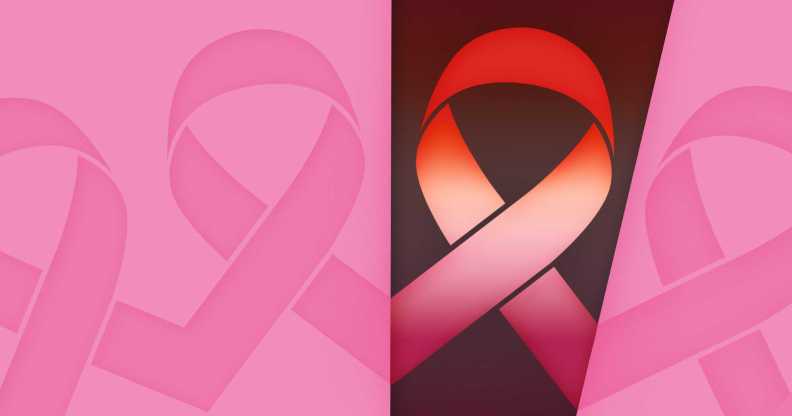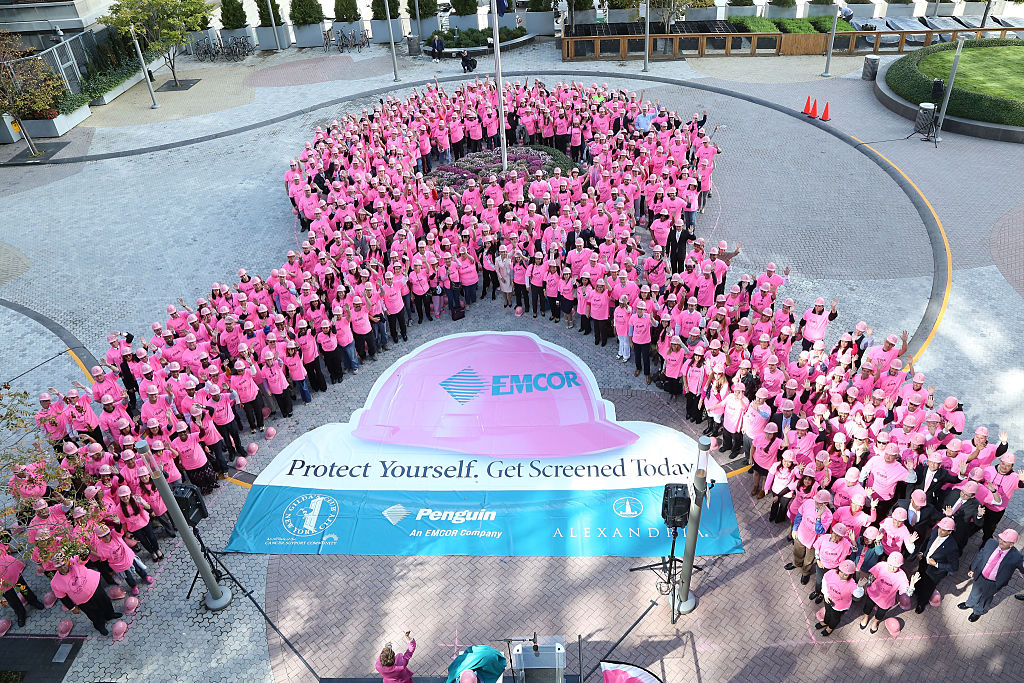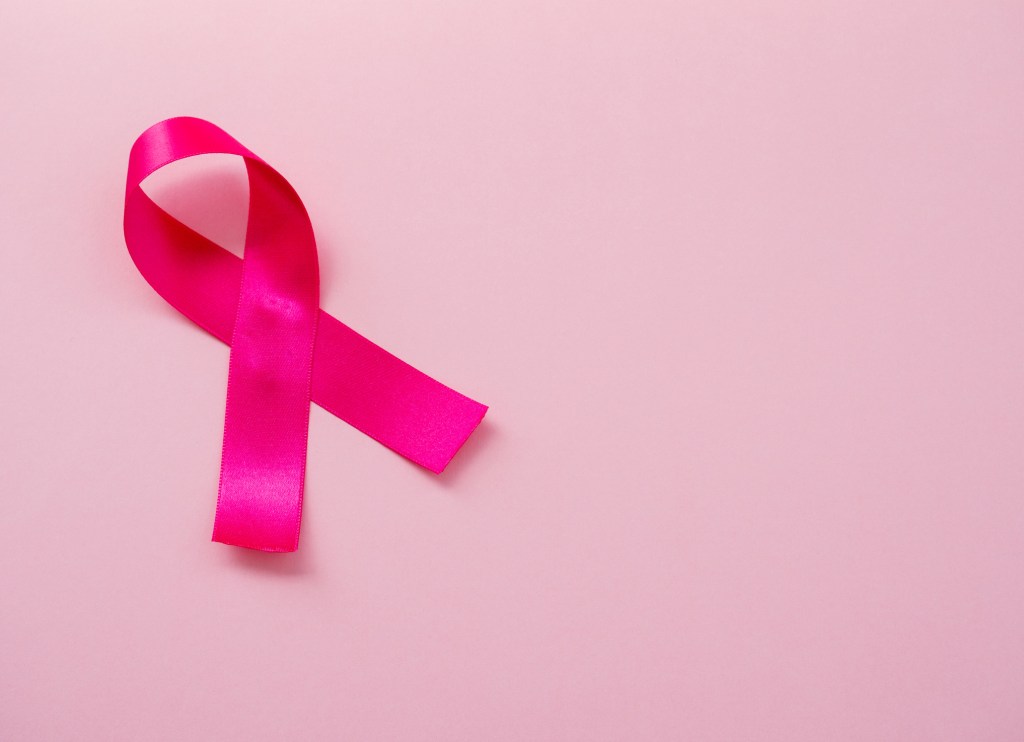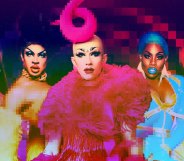‘I’m a lesbian who had breast cancer. It’s time to change the heteronormative pink culture’

Undergoing cancer treatment is never easy, but Ada’s experience was made even more difficult by just how heteronormative breast cancer messaging tends to be. (PinkNews)
Ada was so sure she would be given the all-clear when she was tested for breast cancer that she collected the results on her own.
Sitting in a hospital room by herself, Ada was given earth-shattering news that felt impossible to comprehend. She was told that she had something called occult breast cancer – a rare form of the disease that can be missed by mammograms and ultrasounds.
Ada, whose name has been changed, was stunned – and in that, she wasn’t alone. Simply put, nobody saw it coming.
“It was prefaced by the consultant saying that they were all very surprised and even shocked,” Ada tells PinkNews.
An MRI revealed that not only did Ada have breast cancer, but the hidden tumour was four centimetres in diameter. She was told she would have to undergo 13 cycles of chemotherapy before having surgery to treat the cancer. After surgery, she’d need an additional 14 rounds of chemo, plus radiotherapy.
Coming to terms with chemotherapy was difficult for Ada. Like many people, she had always associated the treatment with what she calls its “proximity to death”.

“I didn’t really know anything about chemotherapy other than that I had a close friend many years ago who was diagnosed with a terminal cancer. [She] had chemotherapy to extend her life, so my association was more with the extension of life rather than potentially curative,” she says.
“There’s not really much education about cancer treatment. You’re told you’re going to have chemotherapy and then it’s all geared towards signing the consent, and in essence the medical consent form is a legal disclaimer that tells you all the worst case scenarios – including that it could kill you.
“You’re not really told the more routine stories of people that go through chemo and come out the other side. So I thought, ‘Well this is life or death.’ I was terrified.”
In Ada’s case, chemo – alongside other treatments – was life-saving. She is now living without any sign of disease, and she is slowly working through what was, she says, a profoundly traumatic experience.
“That’s something I’ve learned from this journey – that a cancer diagnosis is traumatic and capacious. They collect up and associate with other traumatic histories … It was very, very overloaded for me and it’s only really since I finished treatment that I’ve been trying to work through everything that became entangled with the breast cancer diagnosis.”
People with breast cancer are assumed to be cis and straight
Undergoing cancer treatment is never easy, but Ada’s experience was made even more difficult by just how heteronormative breast cancer messaging tends to be. Most people will be familiar with the pink ribbons and the sloganeering around breast cancer that tends to assume people are cisgender and heterosexual.
That’s fine for most people, but for lesbians like Ada, it can be profoundly alienating.

Throughout her cancer care, Ada was constantly assumed to be straight. Medical staff would ask if her husband was coming to collect her. Some asked not if she had children, but how many she had.
But the stand-out symbol of the heteronormativity of breast cancer culture came for Ada when she was given a wig after starting chemotherapy. A wig is usually designed to help restore confidence for a person experiencing hair loss – but for Ada, it did anything but. She was stunned when it arrived in the post.
“My partner and I got it out of the bag and we just cried with laughter. I mean, it was just this moment of disbelief. I’ve shown it to various people. Someone said, ‘You look like Pamela Anderson.’ I think it’s great – I could probably go out on the drag queen scene!” she laughs.
Ada’s wig gave her long, luscious blonde hair that made her look like a completely different person. Because Ada is so well-acquainted with the workings of heteronormativity, she was able to laugh at the experience – but she says it could have been “much more negative” for another queer person.
‘There was no horizon where they could imagine I might not be straight’
There was also another moment that came to symbolise just how normative the culture around breast cancer tends to be.
“When I finished the first round of chemo, so before surgery, you get to ring a bell … it marks some achievement,” she says. “My partner would come every week but would have to sit outside because friends and family aren’t allowed in the unit. So they’d sit outside, and the manager of the chemo unit said to me, would you like your son to come in?”
The “son” they were referring to was, in fact, Ada’s non-binary partner, who is just eight years her junior.
“I think I would have already had a lot of media attention if I’d had a child at the age of eight,” Ada laughs. “But also, my partner identities as non-binary – they’re clearly, I would imagine, LGBTQ+.
“But in that moment, I just thought, this is the problem … it was inconceivable that the person waiting for me could be my partner.
“There’s no blame with the individual nurses – they were all lovely – but there was just no horizon where they could imagine that perhaps I might not be straight.”
This heteronormativity means Ada has also avoided outing herself in her peer support groups. She’s terrified that being open about who she is could lead to her being pushed out.
“One of the consequences of that is that it reminds you of perhaps other experiences you’ve had where you’ve censored yourself or silenced yourself, and I don’t think that’s good for mental health, particularly when you’re going through cancer treatment,” she explains.
Things finally started to change for Ada when she discovered OUTpatients, a UK-based charity dedicated to supporting LGBTQ+ people with cancer.
“I found OUTpatients when I was nearing the end of my first chemo – I had 13 cycles before surgery and I was really desperate to find other queer people going through cancer. Just through Googling I came across them and got in touch with [founder] Stewart O’Callaghan and I joined their peer support group.”
She adds: “It was a revelation just to be able to share some of these experiences, because we all have them. I think almost everything I’ve said was mirrored in some way by the other people in the group.”
Now that Ada has gotten through her treatment, she wants other queer people to know how important it is to get checked if you think something is wrong – even if you can’t feel a palpable lump.
“If you do have persistent pain, I would say it’s always worth getting it checked out.”
How did this story make you feel?

